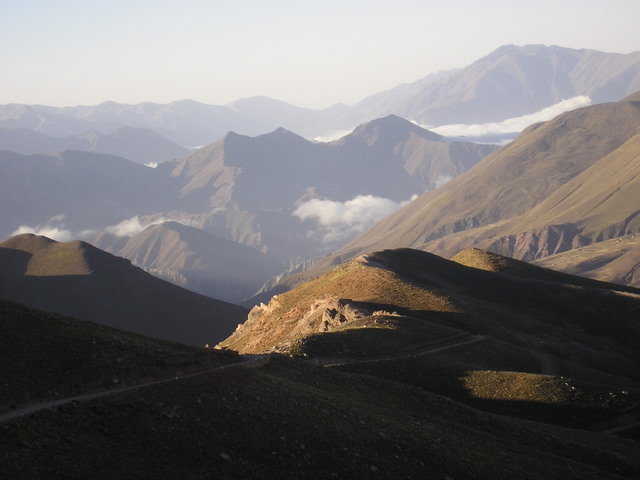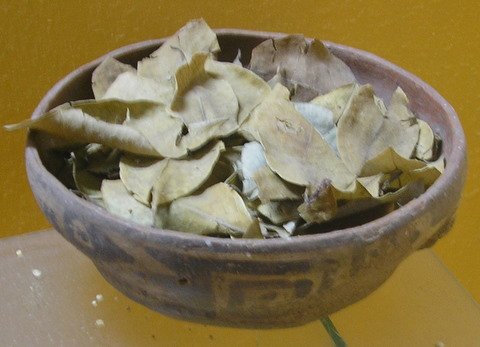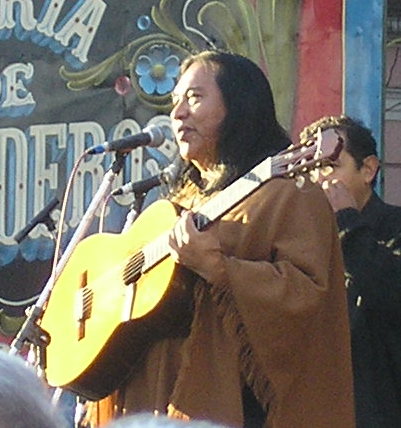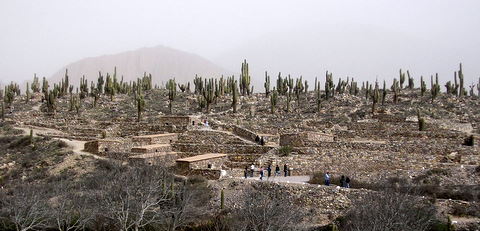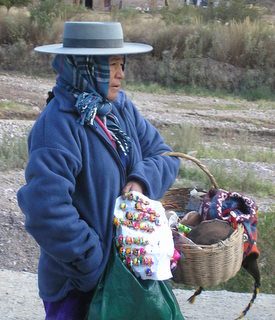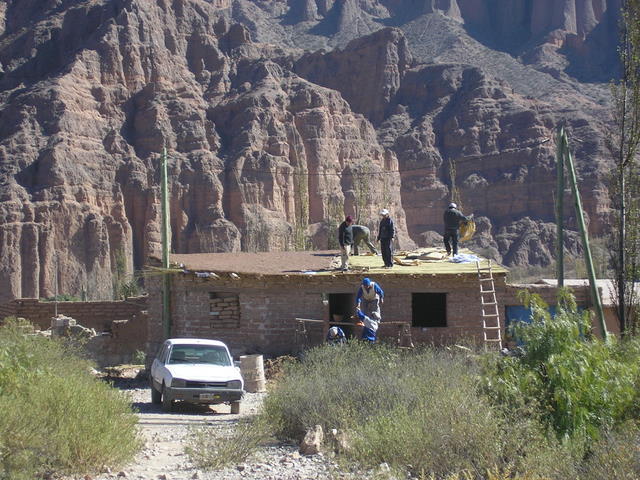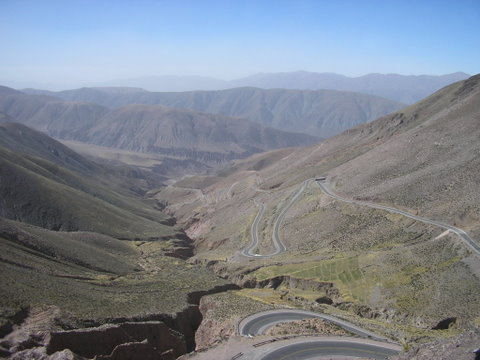|
The Andean NorthwestLand of the Pachamama“We live and eat from the land. Pachamama is our mother and we have to respect her." Juana, spiritual healer
Our guide pulled the Land Rover off the road and stopped the engine. The lights were off, we were in total blackness and silence. I asked,"¿Cuál es el problema?" believing something must be wrong with the car. Opening the door, he replied, “No hay problema. Las estrellas.” Craning our necks there certainly wasn’t a problem. As eyes adjusted, the sky was ablaze with stars. The Milky Way was a sash of white gauze. The Southern Cross stood out clearly despite competition from a few million other constellations. Satellites passed overhead. Stars sparkled white, blue and red. The dome of the planet was a Christmas display. At 10,000 feet elevation in the middle of the Andes Mountains, there were no ambient lights to dim the awe we were experiencing. No wonder for thousands of years the indigenous peoples of the Andes worshiped the land as a living force and looked upon the Pachamama - the Earth Mother - as their benevolent protector. The mountain environment provided for the people - pack animals, meat, cloth, water from the glaciers for drinking and irrigating the parched land. Despite Inca and Spanish conquest, both the indigenous cultures and the Pachamama remain. Jesuit missionaries were far too intelligent to attempt a wholesale, and fruitless, change of attitude. They could understand the correlation between the Catholic belief in the Virgin Mary with that of the Pachamama and interwove their veneration.
(Coca leaves are a common offering to Pachamama/Virgin Mary. This gift of the Andes has been chewed by indigenous Andeans for millennia to relieve altitude sickness.)
Today roadside shrines can be seen in the most remote mountain areas with statues to the Virgin Mary with traditional offerings to the Pachamama of food, jewelry, figurines, coca leaves and hundreds of burning candles. In February the Fiesta de la Pachamama is held in the Catamarcan village of Amaicha. The festival is akin to Mardi Gras, but the sacred rites are private, open only to believers/practioners. Tomas Lapin, among other Andean singer-songwriters, keep the ancient sacred music alive and compose new music based on the traditions for a new Argentine generation. This is the Andes that most hikers and tour groups never see, no less think about.
(Tomas Lapin at the Pachamama Festival, Mataderos, Buenos Aires)
Everyone knows the geography - at 5,500 miles the longest mountain chain on earth, the most tectonically active with Aconcagua at 22,840 feet the second largest mountain in the world. The Andes has some of the finest skiing and most breathtaking scenery to be found anywhere. The other reality: it’s home to cultures that have called it home for 6,000 years; irrigation canals constructed 3,000 years ago still water the fields; 3,500 year-old villages are alive with people in traditional clothing except it’s not a fashion statement; hornos, outdoor clay ovens, are still the center of the kitchen; adobe houses are constructed as a community effort without power tools.
(El Pukara, Tilcara, circa 500 ACE)
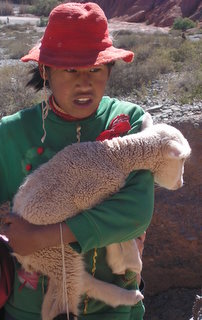
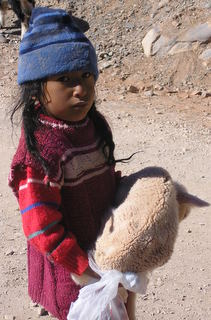
(building an adobe roof, Tilcara)
The legacy of the vast Inca Empire still exists in the Northwest. The only paved road that runs through Los Cardones National Park is built on the foundation of the Inca Road, part of a 25,000 mile system that linked Peru in the north to modern day Mendoza in the south. As you travel through the Valles Calchaquies from Salta to Cafayate via villages such as Cachi, the vegetation changes from forest to giant cactus to finally just rock, scrub grass and lots of dust at elevations approaching 13,000 feet. The mountains themselves are in hues of red/orange and green due to the abundance of iron oxides. Interspersed are strata of yellow that are marine deposits when in pre-Andean days, 170 million years ago, the whole region was submerged by the Pacific Ocean. 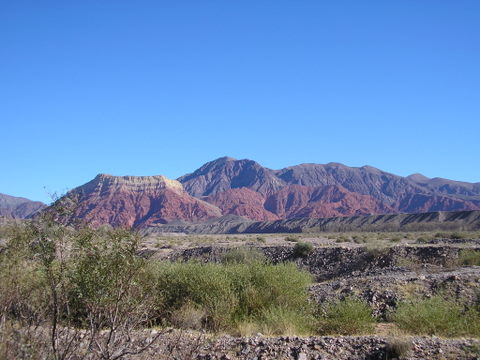
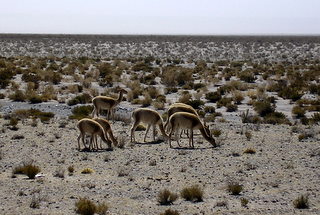
(Vicuna)
The mountain roads are challenging - narrow, frequently unpaved, and during the summer rains dangerous for inexperienced drivers. There are many excellent guided tours using small busses and all terrain vehicles out of Salta and Jujuy. One of the world's great tourist train rides, La Tren a las Nubes (Train to the Clouds) takes you on a 15 hour round trip that you will never forget: AR$532 (US$140 - Saturdays in winter only, advance reservations required.)
Argentina’s northwest provinces are home to an ancient way of life, the best preserved Spanish colonial cities in the nation and a young ecologically and culturally sensitive tourism boom. The urban jewel of Spanish colonialism is
Salta,
with
Tucuman
a vibrant delight yet off the tourist path. The 3500 year-old village of
Tilcara
is an excellent base to explore the UNESCO World Heritage Site of the Quebrada de Humahuaca. The wine growing center of Salta Province,
Cafayate,
is rivaling Mendoza and San Juan.
Tafi del Valle,
although overrated as a destination, is gateway to the remote mountain province of Catamarca. At 13,000 feet, the
Salinas Grande Salt Flats,
seem like a different planet. Not far, on the Bolivian border, the legendary Ruta 40 begins its 5,000 mile journey to
Tierra del Fuego.
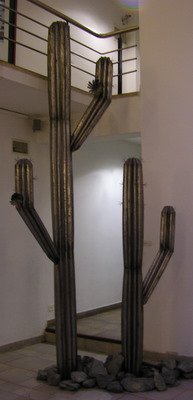
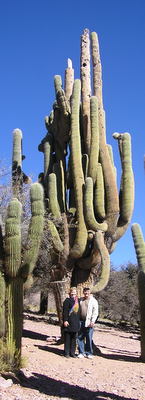
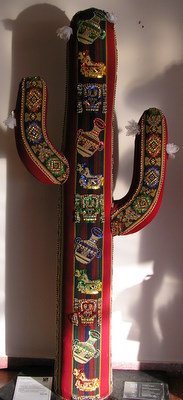
You can view maps of Salta, Jujuy, Catamarca and Tucuman provinces at:
maps of Argentine provinces
|
